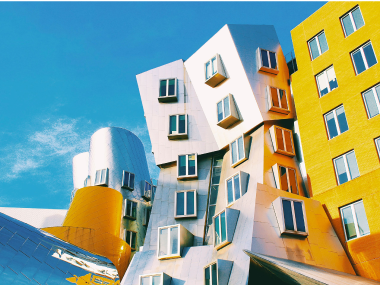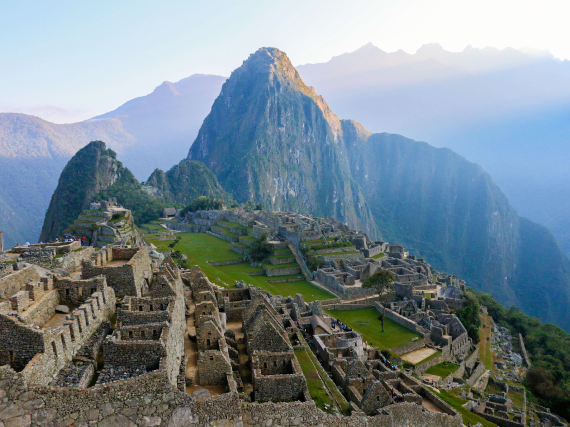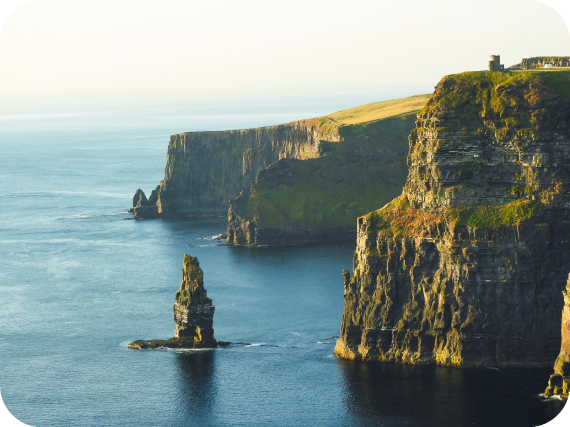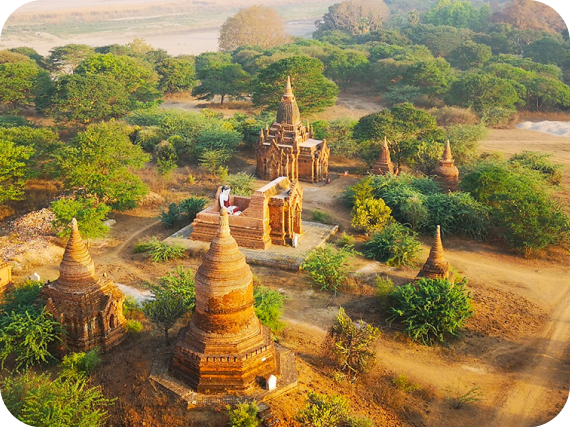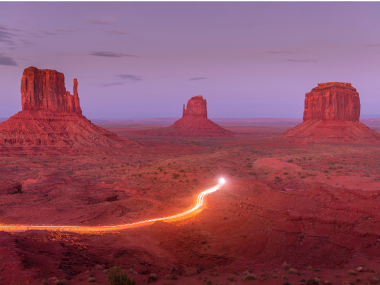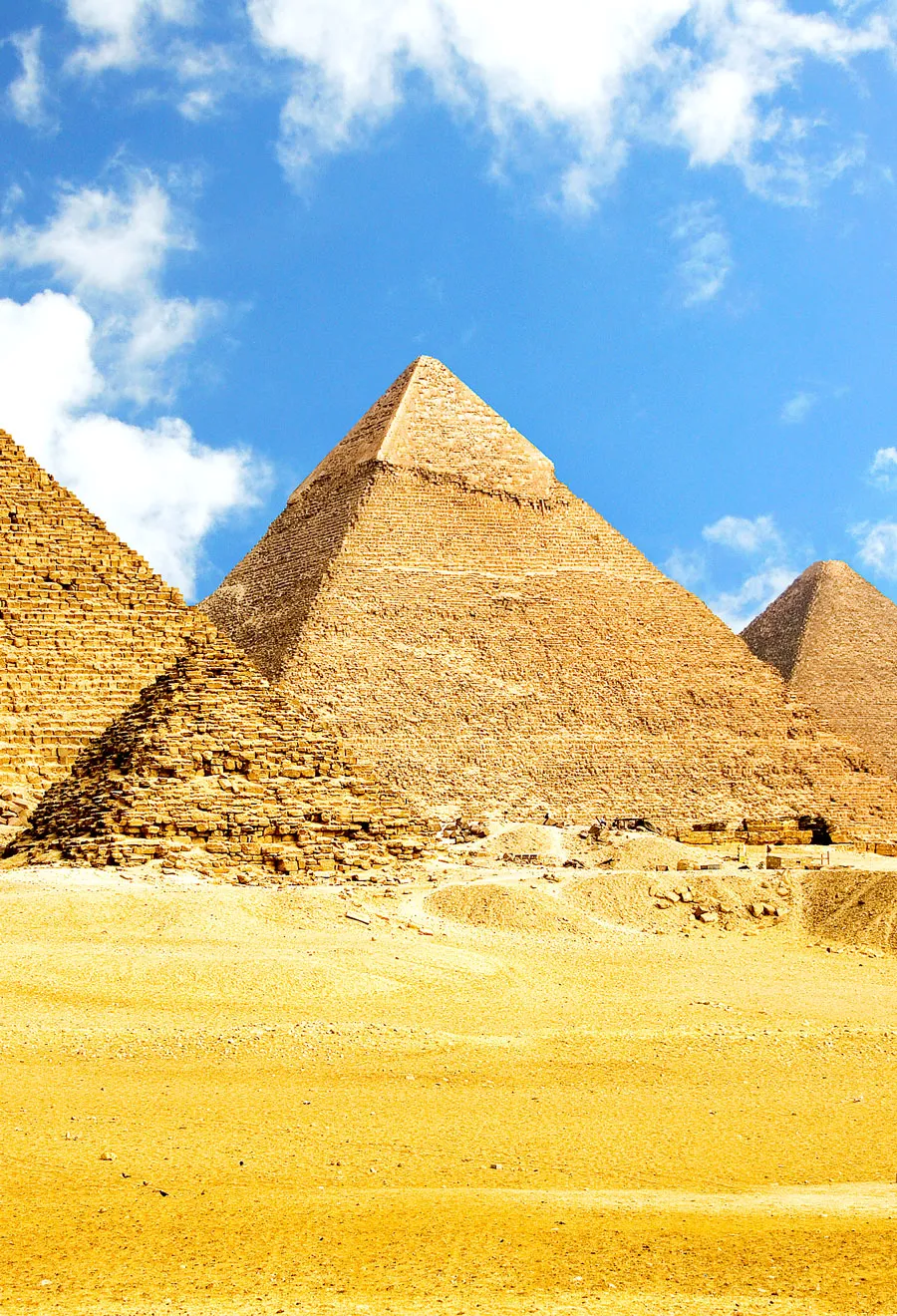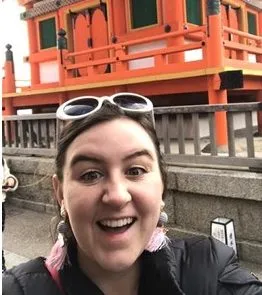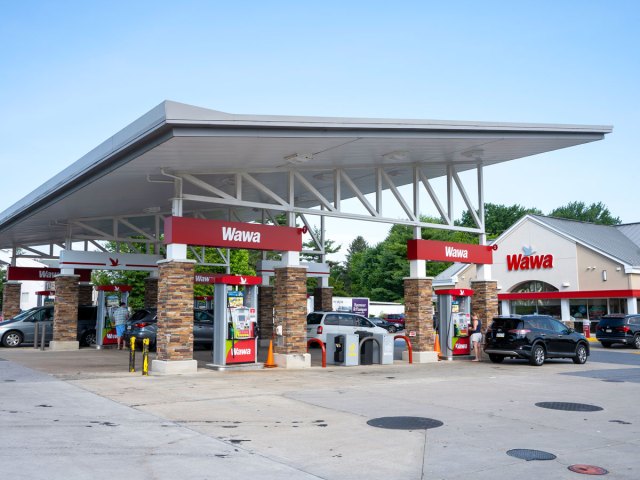Images of the world’s most iconic landmarks are familiar to travelers all over the world, but some were even more magnificent when they were first built. For instance, it may seem strange to envision the Eiffel Tower being any shade other than brown, but if you lived in Paris back in the early 1900s, you’d have a different view of the famous monument. Here are five enduring structures around the world whose original appearances may surprise you.
Eiffel Tower – Paris, France
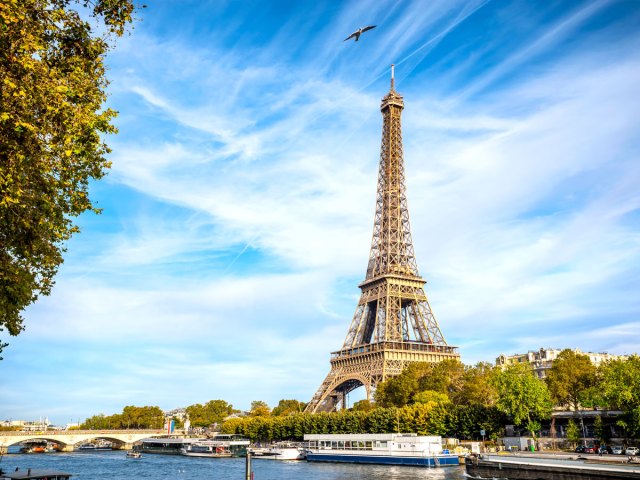
Did you know that the Eiffel Tower has donned eight different shades since it was first constructed? In 1888, the iconic structure was painted a vivid hue called Venetian red, which was applied at the workshop of its namesake designer, Gustave Eiffel. The next year, however, it was painted a different reddish-brown color for the 1889 world’s fair. In 1892, the tower received a coat of ochre-brown, and in 1899, just before the 1900 world’s fair, Gustave Eiffel decided it should be yellow — five gradient shades to be exact, ranging from light yellow at the top to orange-yellow at the base.
Interestingly, the Eiffel Tower was also designed to be temporary. When plans changed and it became a permanent fixture in 1907, Gustave Eiffel chose another yellow-brown hue that lasted for 47 years, until a reddish-brown color was chosen in 1954. In 1968, the iconic “Eiffel Tower Brown” was born. The bronze-like hue lasted 50 years and harmonized with the iconic Haussmann-style apartment buildings that are popular across Paris.
The tower got its most recent makeover in 2019 in anticipation of the 2024 Summer Olympics, changing back to the yellow-brown color that Gustave Eiffel decided to use when it became a lasting beacon of Paris at the turn of the 20th century.
Statue of Liberty – New York, New York
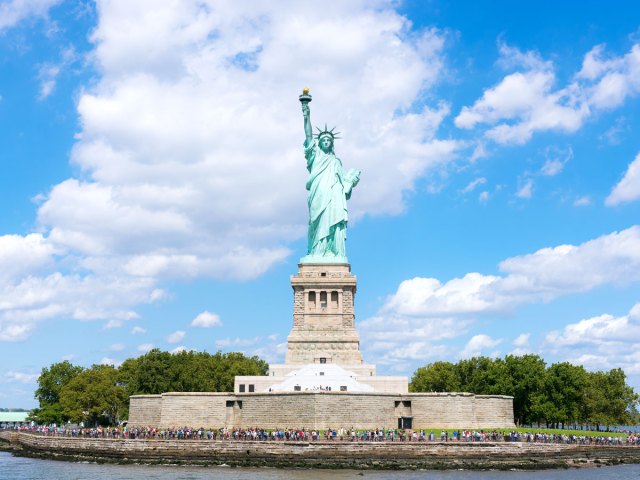
The Statue of Liberty is arguably America’s most treasured landmark, but it didn’t always have its famous green patina. Designed by French sculptor Frédéric-Auguste Bartholdi, Lady Liberty was gifted to the United States to commemorate a friendship with France and the two nations’ shared ideals of liberty.
When she was unveiled in 1886, the copper-clad statue was simply the color of copper — a glimmering reddish-brown, similar to the color of a penny. When the statue was placed on Liberty Island in New York Harbor, the copper coating began to oxidize as it was exposed to the elements, resulting in the blue-green hue we recognize today. The patina actually acts as a protective layer, preventing further corrosion of the copper beneath.
Pyramids of Giza – Egypt
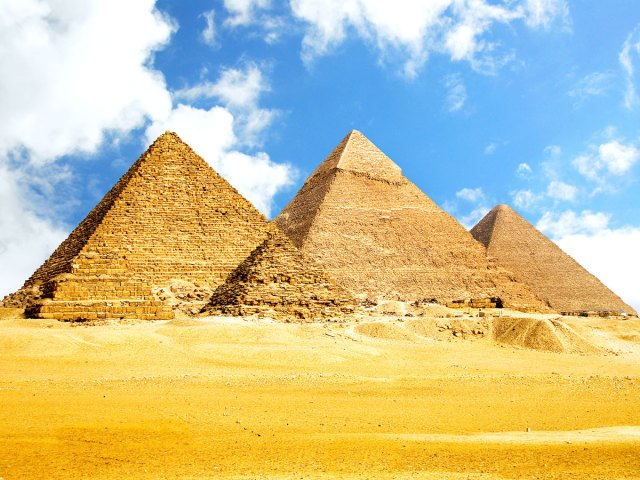
On the west bank of the Nile River near Al-Jīzah (Giza) in northern Egypt, travelers can still witness one of the original Seven Wonders of the World — the only one that remains standing. For nearly 4,000 years after its completion in approximately 2560 BCE, the Great Pyramid was the tallest human-made structure in the world. It’s one of three magnificent pyramids on the site that date back to Egypt’s fourth dynasty.
Today, the pyramids are so old and weathered that they have the same sandy appearance of the surrounding desert. Many visitors don’t realize that the pyramids were once a gleaming white. They were originally encased in smooth, polished white limestone blocks, which have faded over time. Historians also speculate that the Great Pyramid once had a pyramidion or capstone made of gold or covered in gold or electrum (a gold and silver alloy).
Colosseum – Rome, Italy
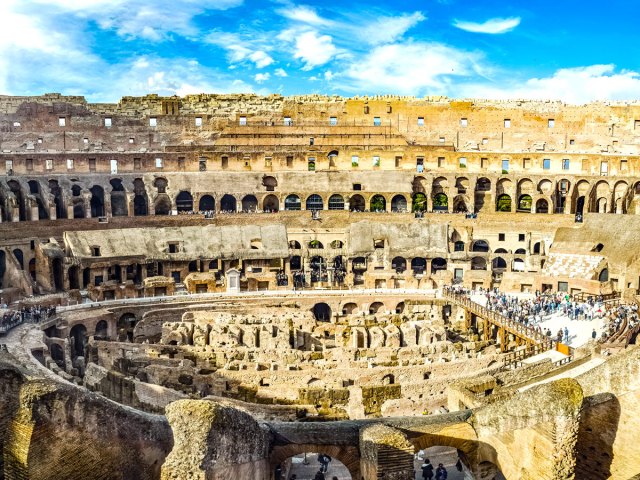
The Colosseum of Rome, another weathered ancient ruin, also once had a more opulent appearance. Though the landmark was originally encased in glistening white travertine marble, it was removed over time and used for other construction projects, such as St. Peter’s Basilica in Vatican City.
The marble was attached to the underlying structure with iron clamps and pins, which were also removed — leaving the holes that we see today. Inside the Colosseum were intricate carvings, statues, precious stones, and gold accents that were looted over time. Interestingly, on several occasions dating back to the third century BCE, the Colosseum was also filled with water to host mock naval sea battles.
Hollywood Sign – Los Angeles, California
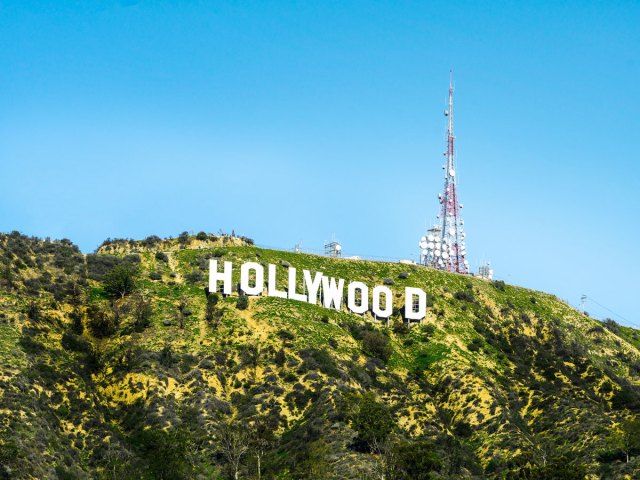
Although it’s now one of California’s most famous landmarks, the Hollywood Sign wasn’t intended to be a permanent fixture in the Hollywood Hills. In 1923, a company called Hollywoodland Property started selling homes and plots of land in the Santa Monica Mountains and created the sign, which originally read “Hollywoodland” as an advertisement. The original sign was 800 feet long and 50 feet tall and featured 4,000 light bulbs to illuminate the letters at night.
The sign was only supposed to remain standing for a year and a half, but it towered over the hills until 1949, when residents complained of its disrepair and demanded it be removed. Instead, the Hollywood Chamber of Commerce repaired and modified the sign, dropping the “land” in Hollywoodland. It became damaged yet again and almost came down permanently in 1978, but thanks to famed Playboy publisher Hugh Hefner, who helped raise $250,000 for its refurbishment, the beloved landmark has stayed in Tinseltown ever since.
More from our network
Daily Passport is part of Inbox Studio, which publishes content that uplifts, informs, and inspires.
